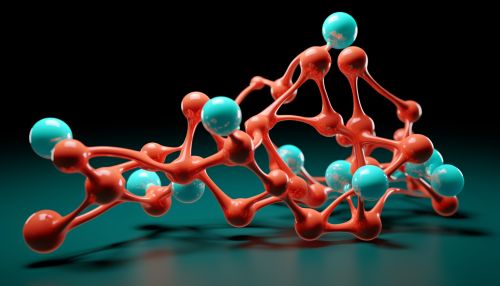Manganese peroxidase
Introduction
Manganese peroxidase (MnP) is a type of Heme-containing peroxidase enzyme that is involved in the degradation of lignin, a complex organic polymer that forms key structural materials in the support tissues of vascular plants and some algae. MnP is produced by several species of white-rot fungi, a group of fungi that can efficiently degrade lignin to carbon dioxide and water.
Structure
Manganese peroxidase is a monomeric enzyme that contains a single Heme group. The heme group is deeply buried within the protein structure, with only a small portion exposed to the solvent. The heme iron is coordinated by a histidine residue and is linked to a calcium ion, which is crucial for the stability of the enzyme.


Function
The primary function of manganese peroxidase is the oxidation of Mn(II) to Mn(III), which is then able to oxidize phenolic structures in lignin. The enzyme accomplishes this by using hydrogen peroxide to oxidize a manganese ion, which is then able to act as a powerful oxidizing agent. The Mn(III) ion is stabilized by chelation with organic acids, which are also produced by the fungus.
Mechanism
The mechanism of manganese peroxidase involves several steps. First, the enzyme binds a molecule of hydrogen peroxide at the heme site. This leads to the formation of a compound I species, which is a high-valent iron-oxo species. This compound I species then oxidizes a Mn(II) ion to Mn(III). The Mn(III) ion is then released from the enzyme, where it can go on to oxidize lignin.
Biological Role
Manganese peroxidase plays a crucial role in the lifecycle of white-rot fungi. These fungi are able to degrade lignin, which is a major component of wood and other plant materials. This allows the fungi to access the cellulose and hemicellulose in the plant material, which they can then use as a source of carbon. The ability to degrade lignin also allows these fungi to colonize and decompose dead wood, playing a crucial role in the carbon cycle.
Industrial Applications
Due to its ability to degrade lignin, manganese peroxidase has potential applications in several industries. For example, it can be used in the pulp and paper industry to bleach pulp, reducing the need for harmful chlorine-based bleaching agents. It can also be used in the treatment of dye-containing wastewater, as it can degrade the complex organic molecules found in many dyes.
